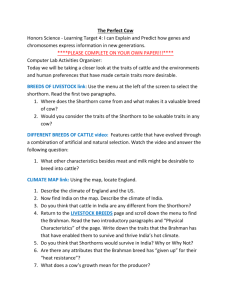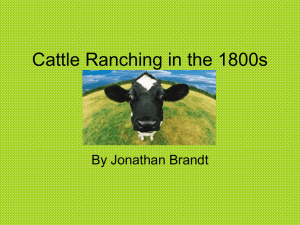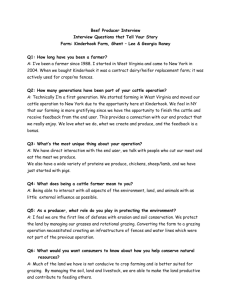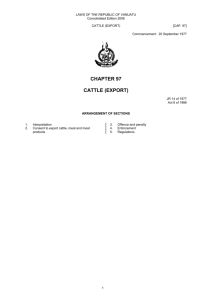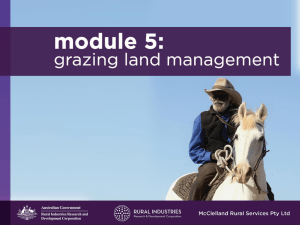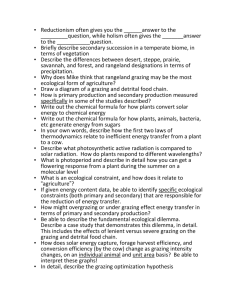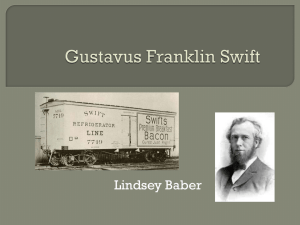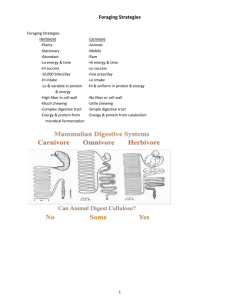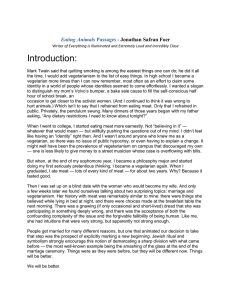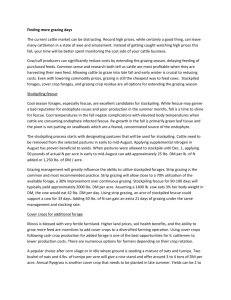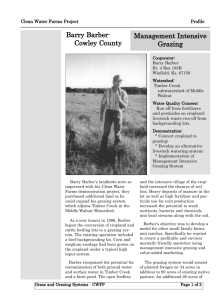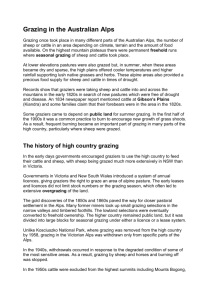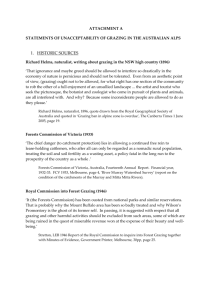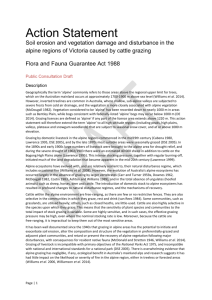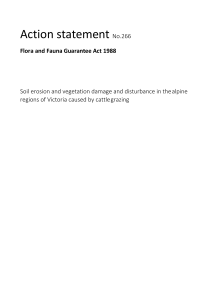Cattle, Americas Best Kept Environmental Secret
advertisement
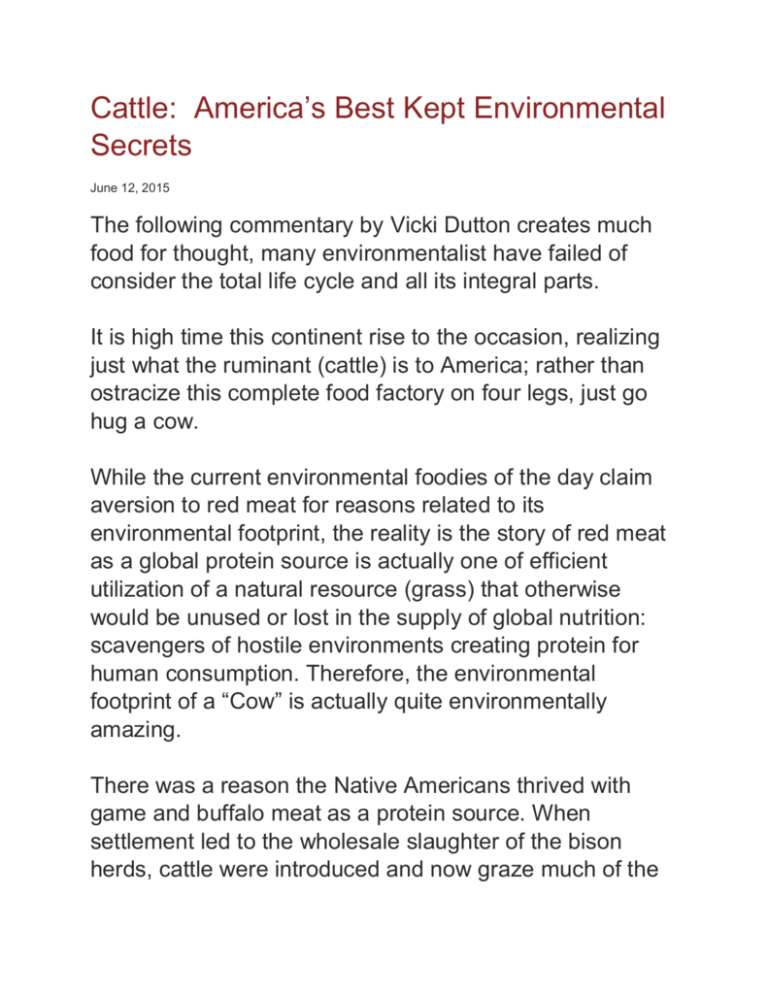
Cattle: America’s Best Kept Environmental Secrets June 12, 2015 The following commentary by Vicki Dutton creates much food for thought, many environmentalist have failed of consider the total life cycle and all its integral parts. It is high time this continent rise to the occasion, realizing just what the ruminant (cattle) is to America; rather than ostracize this complete food factory on four legs, just go hug a cow. While the current environmental foodies of the day claim aversion to red meat for reasons related to its environmental footprint, the reality is the story of red meat as a global protein source is actually one of efficient utilization of a natural resource (grass) that otherwise would be unused or lost in the supply of global nutrition: scavengers of hostile environments creating protein for human consumption. Therefore, the environmental footprint of a “Cow” is actually quite environmentally amazing. There was a reason the Native Americans thrived with game and buffalo meat as a protein source. When settlement led to the wholesale slaughter of the bison herds, cattle were introduced and now graze much of the same lands as did the bison; land that has no real productive value other than grazing. By being graze, it produces protein for humans. USDA information indicates that grazing land in the US is about 30% of the total land base. Of the 2.3 billion acres of land in the US, grassland and pasture are 614 million acres, only 18%. An additional 127 million acres of grazed forest take the total grazing land to almost 800 million acres. Another 408 million acres is cropland. These grazing lands are undesirable for raising crops but grow excellent grass. Cattle harvest these grasses converting them to valuable proteins for humans. On this grazing land, cattle produced in the US generates 25 billion pounds of red meat as protein, according to USDA, with a retail value of $88 billion, a producer (farmer/rancher) value of $50 billion and export value adding another $6 billion. However, environmentalist would prefer to allow this land to be natural, letting the buffalo roam and the deer and antelope play, like music tripping over the land. Indeed a wonderful idea, but what cost to human protein supply? Those who bash red meat should be forced to explain their plan to replace 25 billion pounds of protein, the bioavailable iron, zinc and the naturally occurring micronutrients in red meat have been a reliable source of nutrients for centuries. All of which are useable to our bodies than plant source nutrients. Let’s drill down a little further, to the argument of the pundits whose catch-phrase of sustainability is now driving food agenda, by taking a look at what red meat harvesters contribute to the nutrient cycle of mankind. Unlike any other protein, ruminants are able to populate large areas of geography, consuming the vegetation and in so doing, create protein. At the same time, cattle replace nutrients back into the land in the form of natural fertilizer. Ruminants engage to the sustainable conversion of vegetation to protein in a practice as old as nature itself. Utilizing the resources often naturally available and providing an ecosystem of fertilizer and ground cover control not only benefits the environment, but grazing also controls vegetation to prevent grass fires. Also as cattle walk their toes aerate the soil and grass seed contact with soil to germinate producing more plant growth for soil cover that reduces wind and water erosion. So this is what the equation looks like: 30% of American’s poorest land supports about $100 billion of the country’s economy, produces 26 billion pounds of protein while providing rural employment and economic activity as those dollars and beef flow through the marketing chain to the consumer. Less than 2% of the population produces Agricultural Commodities and less than 1% practice animal husbandry of any form. Today on farmer/rancher provides food, fiber and shelter for 155 people. What environment purists do not consider is that the failure to utilize grazing land would be an environmental disaster. That’s because replacing red meat protein with alternative proteins, in a world already wondering how it will feed 9 billion humans projected to inhabit this planet by 2050, will likely result in soil degradation, more wildlife habitat plowed under and climate change, possibly driving up the cost of alternative proteins as a result. The reality is the 18% of American cropland used to produce food for American families and the rest of the world would be challenged to supply alternative vegetative protein for humans and the grains to feed alternative animal protein sources. Thus, the equation which involves utilizing nature’s grasslands and foothills; land so stony, sandy, forested, brushy and with a topography that only a four legged creature can utilize it has, since time began, contributed to the sustenance of our world. Beef may indeed be the conservationist’s best kept secret. Cattle are truly nature’s scavenger and the much-maligned beef industry should indeed be an environmental pillar, utilizing otherwise lost ground in the production of protein to feed the world. The reality is the world needs red meat protein to have a protein balance and utilize the natural resource of the planet to the full degree to nourish the world. The story of the cow just may be America’s best kept environmentally sustainable production story. Environment purist should take a second look, maybe drive into America’s cattle country to experience cattle turning rangeland to protein. Perhaps they would see that the view through the rosecolored glasses of the environment footprint equation of a cow is this: Cow plus millions of acres of rangeland is the sustainable production of billions of pounds of protein and economy, utilizing the natural resource of the most hostile ground in America. Maybe then they would compelled to do the world a favor and just hug a cow! By Vicki Dutton from Paynton Sask, Canada What are your thoughts at this point?? Related Articles: A Greener Tomorrow Wow That Cow The Quiet Economy

